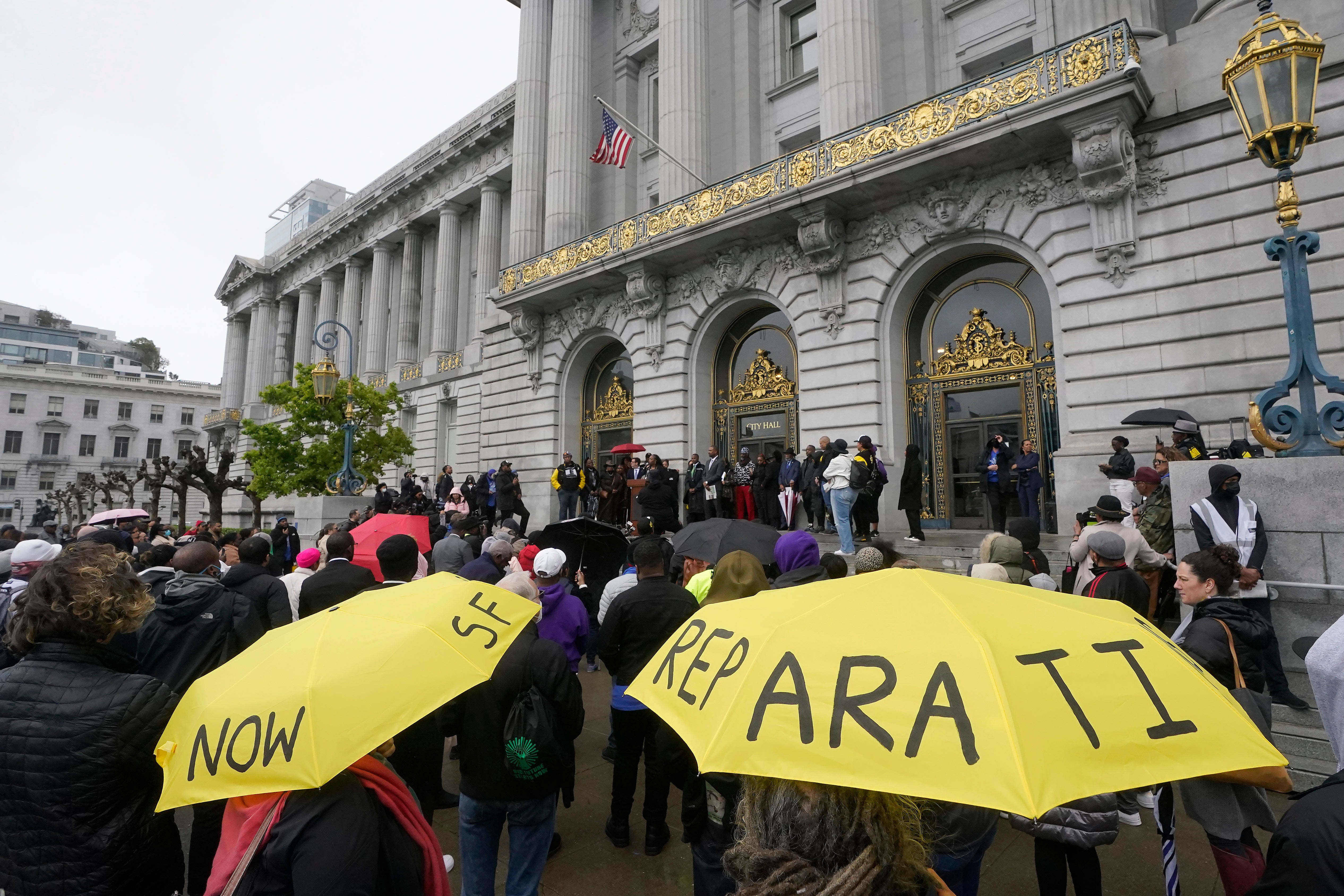
Black residents of California could be owed $800bn in reparations for generations of over-policing, disproportionate incarceration and housing discrimination, economists have told a state panel considering compensation payments.
The preliminary estimate is more than 2.5 times larger than the state’s $300bn annual budget.
The recommended figure does not include an additional $1 million suggested per older Black resident for health disparities they may have suffered resulting in the shortening of their average life span.
Nor does the total take into account the prospect of compensating people for property unjustly ceased by the government or Black businesses otherwise devailed, two further harms the Reparations Task Force assigned to look at the problem concluded the state had perpetuated.
Black residents of the state are unlikely to receive cash payments anytime soon, however, because California may never adopt the economists' calculations.
The task force is due to meet on Wednesday to discuss the analysis and could vote to disregard the calculations or come up with its own.
“We’ve got to go in with an open mind and come up with some creative ways to deal with this,” said California Assembly member Reggie Jones-Sawyer, one of two lawmakers on the task force responsible for mustering support from state legislators and governor Gavin Newsom before any reparations can become reality.
In an interview prior to the meeting, Mr Jones-Sawyer said he felt further consultation was necessary before deciding whether the scale of payments is feasible.
The estimates for policing and disproportionate incarceration and housing discrimination are not new. The figures came up in a September 2022 presentation when the consulting team sought guidance on whether to use a national or California-specific model to calculate damages.
But the task force must now settle on a cash amount as a 1 July deadline approaches, by which it must present lawmakers with recommendations on how California might seek to atone for its role in perpetuating racist systems that continue to undermine Black lives.
For those who support the call for reparations, the sheer size of the amount the economists have recommended serves to underline the long-lasting harm done to Black Americans over the decades, even in a state that never officially endorsed slavery, a fact that opponents of the proposal have used to argue against charging current taxpayers for the wrongs of the past.
The ultimate authority over what happens next rests with the state Assembly, Senate and the governor himself, not the task force.
“That’s going to be the real hurdle,” said Senator Steven Bradford, a member of the panel. “How do you compensate for hundreds of years of harm, even 150 years post-slavery?”
Financial redress is just one part of the package being considered. Other proposals include paying incarcerated inmates market value for their labour, establishing free wellness centers and planting more trees in Black communities, banning cash bail and adopting a K-12 Black studies curriculum.
Governor Newsom signed legislation in 2020 creating the Reparations Task Force in response to the national Black Lives Matter protests that erupted over the death of George Floyd, a Black man, at the hands of Minneapolis police.
An advisory committee in San Francisco has recommended $5m payouts, as well as guaranteed income of at least $97,000 and personal debt forgiveness for qualifying individuals. Supervisors expressed general support but stopped short of endorsing specific proposals. They will take up the issue later this year.
The statewide estimate, based on modeling and population estimates, includes $246bn to compensate eligible Black Californians whose neighborhoods were subjected to aggressive policing and prosecution in the “war on drugs” from 1970 to 2020. That would translate to nearly $125,000 for every person who qualifies.

The economists also included $569bn to make up for the discriminatory practice of redlining in housing loans. Such compensation would amount to about $223,000 per eligible resident who lived in California from 1933 to 1977. The aggregate is considered a maximum and assumes all 2.5m people who identify as Black in California would be eligible.
Redlining officially began in the 1930s when the federal government started backing mortgages to support homebuying but excluded majority Black neighborhoods by marking them as red on internal maps. The racial gap in homeownership persists today and Black-owned homes are frequently undervalued. Redlining officially ended in 1977 but the practice persisted.
The monetary redress would only be available to people who meet residency and other requirements. They must also be descendants of enslaved and freed Black people in the US as of the 19th century, which would exclude Black immigrants.
In their report, the consultants advised the state task force to “err on the side of generosity” and consider a down-payment with more money to come as more evidence becomes available.
“It should be communicated to the public that the substantial initial down-payment is the beginning of a conversation about historical injustices, not the end of it,” they said.
Additional reporting by agencies.







